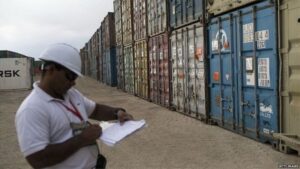
America fought its longest and costliest war in Afghanistan. The fighting ended on 30 August when the last American soldier left Kabul.
According to the ‘Cost of War’ project of Brown University, the burden of this war on the US Treasury came to $ 2.3 billion.
After America’s withdrawal from Afghanistan, the growing power of the Taliban, the occupation of the country and the atmosphere of chaos have been described by many experts as America’s defeat.
But for some people it may be a lost battle, but for many it has been a profitable deal.
Between 2001 and 2021, of the $ 2.3 billion spent in this war, about $ 1.05 billion was spent in completing the Defense Ministry’s operations in Afghanistan.
A large part of this amount was spent on the services of private companies that supported American operations in Afghanistan.
Professor Linda Bilms of the Kennedy School of Governance at the University of California says, “The number of American soldiers in this fight was not very large. All the volunteers were provided by military contractors. There were more contracts than American soldiers. But the number of people working was double.”
Linda Bilms told BBC Mundo that the number of troops to be sent to Afghanistan was politically limited and that the number of contractors was also decided on this basis.
“There were contractors who did a variety of jobs, such as refueling airplanes, driving trucks, cooking, cleaning, operating helicopters, and transporting all kinds of equipment and materials,” she says. , used to build runways etc.

- These five companies benefit the most
More than 100 companies from America and other countries had received contracts from the US Defense Ministry for all types of services in Afghanistan. Some of these companies even made billions of dollars.
Professor Heidi Peltier, director of the ’20 Years of War’ project, is also a part of the ‘Cost of War’ project.
He told BBC Mundo that there is no official data to show which companies have benefited the most. However, he shared the project’s projections with BBC Mundos which are yet to be published.
These estimates have been prepared based on a review of data available on the US government website usaspending.gov. This data gives official information on US government spending, which has been prepared after the 2008 financial crisis.
Heidi Peltier says, “These figures are mainly based on the period from 2008 to 2021. However, some projects are from before 2008. In this case, if we look at the year 2001, then the actual figures may be higher.”
According to these estimates, the top three US contractors in Afghanistan are Dinecorp, Fluer and Kellogg Brown & Root (KBR).
These contracts were awarded to these companies as part of the ‘Logistics Increase Program with Civilian Personnel (LogCAP)’.
“Logcaps are comprehensive multi-year contracts that offer opportunities for a range of services in logistics, management, transportation, equipment and aircraft maintenance and support,” explains Heidi Peltier.
- dincorp
One of Dinecorp’s many tasks was to provide equipment and training to Afghanistan’s police and anti-drug forces. The company also provided bodyguards to Hamid Karzai when he was the President of Afghanistan.

According to Heidi Peltier’s calculations, DineCorp received contracts worth $14.4 billion, including $7.5 billion from LogCap.
Dincorp has recently been authorized by Amentum Consortium.
“Since 2002, Dinecorp International has worked side-by-side with its government clients and their partners in Afghanistan,” a Dinecorp spokesperson told BBC Mundo questions about its activities.
The spokesperson said that being a private company, it does not make public the details of its contracts and other financial details.
Fluor is a Texas-based company that oversaw the construction of US military bases in southern Afghanistan.
According to the information given on the company’s website, it also operated 76 forward operating bases (small military bases) in Afghanistan. Helped one lakh soldiers and gave food to more than one lakh 91 thousand in a day.
According to Heidi Peltier, Fluor Corporation received contracts worth $13.5 billion, of which $12.6 billion is in line with LogCap.
BBC Mundo had requested the Fluer Company to provide information about its activities in the Afghanistan War, but there has been no response till the time this news was published.

- kbr
The Kellogg Brown Route (KBR) oversaw engineering and logistical work to assist American troops. The company used to provide them temporary accommodation, food and other basic services.
This company also provided ground level support to many airports in Afghanistan for NATO air strikes. This also included the management of runways and aircraft maintenance to aeronautical communications.
According to estimates by Heidi Peltier, KBR received contracts worth $ 3.6 billion from the US Defense Ministry.
A company spokesperson told BBC Mundo, “KBR supported the US military in Afghanistan from 2002 to 2010 through a competing contract under LogCap. We won this contract in 2001.”
“Through this program, the company provided food, laundry, electricity, cleaning and maintenance services to 82 US military bases,” a company spokesperson said. In July 2009, the military awarded the contract to Dinecorp and Fluer, who had jointly awarded the contract. Worked on it since. KBR terminated its services in the year 2010.”
- Raytheon
The fourth highest-grossing company was Raytheon, which is one of the largest aerospace and defense companies in the US. The company won contracts worth $2.5 billion for services in Afghanistan.
Its most recent assignment was to train the Afghan Air Force, for which it got a contract worth $ 140 million in the year 2020.
Aegis LLC is a security and intelligence company based in Virginia. It is the fifth highest earning company in Afghanistan through services. It got contracts worth 1.2 billion dollars.
She provided security at the US Embassy in Kabul.
BBC Mundo reached out to Aegis to inquire about his activities in Afghanistan, but there was no response from his side till the publication of this article.

- Defense companies profit?
Experts BBC Mundo spoke to agreed that American defense contractors such as Boeing, Raytheon, Lockheed Martin, General Dynamics and Northrop Grumman benefited greatly from the Afghan war.
Linda Bilms says, “He made a lot of money from the war.”
However, it is difficult to ascertain how much money he received as his contracts were not directly related to the ongoing operations in Afghanistan.
Heidi Peltier explains, “They all got contracts in America to make goods that were to be used in Afghanistan. So these expenses were not included in the expenses in Afghanistan.”
According to a report released this week by the ‘Cost of War’ project, these five companies have benefited the most from US military spending since 9/11.
“Between fiscal years 2001-2020, these five companies received contracts worth $2.1 trillion (calculated in 2021 dollars) from the US Department of Defense,” the report says.

BBC Mundo asked these five companies how the war in Afghanistan affected their business and contracts.
General Dynamics declined to comment while others had not responded till this article was published.
Heidi Peltier cites the example of the Raytheon company, which has earned more than $ 2.5 billion because this figure is only for contracts awarded directly in Afghanistan.
“If Raytheon has received a contract for weapons or communication systems and they are made in the US and used in Afghanistan, then that contract will not be called Afghanistan-linked,” she says.
Boeing also manufactures the F-15 and F-18 fighter aircraft. But Boeing does not appear on the list of major contractors.
Similarly, Lockheed Martin, the manufacturer of the Blackhawk helicopter, is also not in this list.
Linda Bilms says, “In terms of General Dynamics, they mostly made light military vehicles and did a lot of cyber security work in Afghanistan.”
Responding to questions from BBC Mundo, Pentagon spokeswoman Jessica Maxwell confirmed that it was difficult to ascertain how much these five defense contractors earned by providing equipment and services in Afghanistan.
He said, “It is impossible to predict. The Ministry of Defense receives a variety of products and services from these companies, but they are not just for Afghanistan. We buy them for operations around the world. Some are used by Afghanistan.” done in.”

- monopoly on prices
Linda Bilms says that companies have been arbitrary in terms of prices of services in the Afghan war.
“Many contracts were awarded without competition or there was very little competition. There are very few companies that provide such services, so some companies become monopolies,” she says.
Linda says that in many cases companies raise prices. Citing poor security conditions at the service site and the difficulties in reaching there.
Regarding the way contracts were awarded in the Afghan war, a Defense Ministry spokeswoman said, “The policy of the Ministry of Defense is to award contracts on the basis of competition as much as possible. However, most weapon systems were tendered in the early stages of their development. “
Linda also says that there is corruption in it. He said, “It is a different thing to be charged 20 times the price for painting a wall, but taking money and not painting the wall is corruption. That is, there is nothing to paint, yet the money has been kept.”

At the same time, she says that subcontractors were also given work in Afghanistan. This means that the main contractor who got the work from the government got the work completed by giving a contract to someone else.
According to Linda Bilms, there is no account of how much money the subcontractors took.
Regarding this, a Defense Ministry spokesperson says that the country’s rules and regulations “provide a strong security system to guarantee fair prices for goods and services. Even in processes that involve only one supplier.”
Regarding the alleged corruption allegations, Maxwell said that any evidence of fraud, abuse or corruption should be reported to the Inspector General of Defense.
The Office of the Inspector General has reported that between 2008 and 2017 the United States lost about $15.5 billion in damages due to abuse or fraud in Afghanistan’s reconstruction efforts, The New York Times reported.
Linda Bilms says that the war did not benefit a single company, but different companies, including companies related to defense equipment, including logistics companies, construction companies and fuel suppliers etc.







